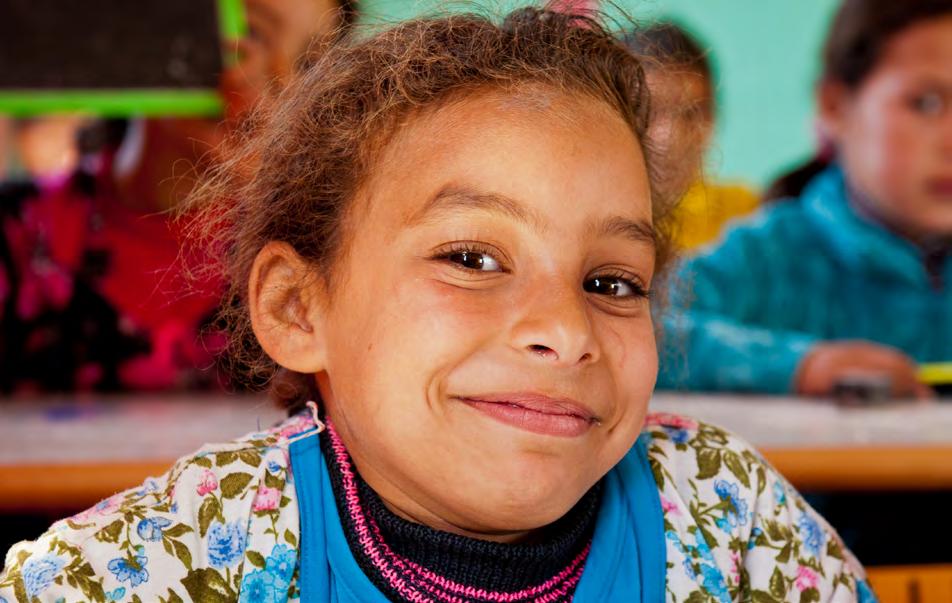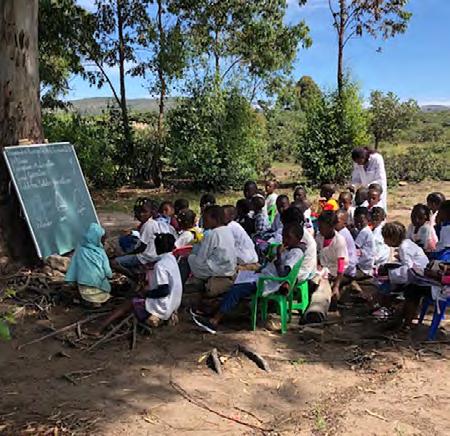
2 minute read
SPOTLIGHT ON
from Count me in
by WBGEducation
Investing in Early Childhood Education
In Morocco, access to pre-primary education is particularly limited for girls in rural areas. The Improving Early Childhood Development Outcomes in Rural Morocco project will address the gender gap. The $450 million loan includes support to enhanced early childhood development (ECD) outcomes for girls through a Behavior Change Campaign for improved ECD practices. This includes parental education sessions focused on positive parenting and promotion of girls’ enrollment and attendance of preschool. This will lead to a significant expansion of the supply of quality early childhood education services in rural areas, and allow for the enrollment of 100,000 additional rural children. It will also contribute to increase equitable access to quality pre-primary education, especially for girls. This investment is expected to bring about positive benefits in terms of women’s labor force participation overall, by reducing the time women allocate to caregiving, and by creating job opportunities for women as preschool educators.
Advertisement
Read More
Empowering Girls and Young Women

The Girls Empowerment and Learning for All Project in Angola is a $250 million project, which includes improved access to sexual and reproductive health services, while strengthening the information and knowledge of girls, boys, parents, and community leaders to boost uptake of these services. For out-ofschool youth, the project scales up second-chance education, incorporating life skills and adolescent health information. It introduces a scholarship program reaching 900,000 youth entering secondary school, with a registration bonus for girls. In addition, support will be provided to improve teaching and learning outcomes, and 3,000 new classrooms will be built.
Read More
LIFECYCLE APPROACH: SUPPORT FROM BIRTH TO ADULTHOOD
The World Bank’s work on girls’ education takes a holistic approach—a lifecycle approach. Our project interventions focus on some of the biggest barriers to girls’ education and are designed based on knowledge and evidence of successful interventions, and what works in local contexts.
LIFECYCLE APPROACH: Education Interventions that Support Girls and Young Women from Birth to Adulthood
Lifecycle
LIFECYCLE APPROACH: Education Interventions that Support Girls and Young Women from Birth to Adulthood
Lifecycle
Education Level
Education Level
Our approach is guided by evidence on what works for girls’ education and targets multiple areas including:
Removing barriers to schooling: through scholarships, providing transport to and from school, and community advocacy campaigns
Removing barriers to schooling: through scholarships, providing transport to and from school, and community advocacy campaigns
Promoting safe and inclusive schools: by making schools safe, working to eliminate school-based gender-based violence, and supporting menstrual health and hygiene for adolescent girls
Promoting safe and inclusive schools: by making schools safe, working to eliminate school-based gender-based violence, and supporting menstrual health and hygiene for adolescent girls
Improving the quality of education: by improving learning for both boys and girls, promoting gender-sensitive teaching and curricula, and introducing extracurricular activities like girls’ clubs
Improving the quality of education: by improving learning for both boys and girls, promoting gender-sensitive teaching and curricula, and introducing extracurricular activities like girls’ clubs
Developing skills and empowering girls for life and labor market success: through supporting young women through the schools-to-jobs transition, promoting skills development programs for young women, and programs to encourage more women in science, technology, engineering, and mathematics (STEM) fields
Developing skills and empowering girls for life and labor market success: through supporting young women through the schools-to-jobs transition, promoting skills development programs for young women, and programs to encourage more women in science, technology, engineering, and mathematics (STEM) fields




